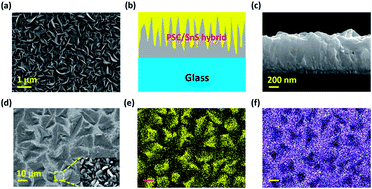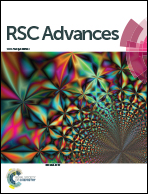Wide channel broadband CH3NH3PbI3/SnS hybrid photodetector: breaking the limit of bandgap energy operation†
Abstract
Perovskite-based hybrid organic–inorganic devices have recently demonstrated high potential in optoelectronics. Yet, the preparation of perovskite-based photodetectors over a desired scale without any complex architecture is still challenging. Herein, we proposed a new CH3NH3PbI3/SnS hybrid planar broadband (365 to 850 nm) photodetector, having a wide channel length of 6 mm. The growth of the device was studied by utilizing scanning electron microscopy, energy-dispersive X-ray mapping, X-ray diffraction, and optical spectroscopies. Furthermore, the efficient charge transfer from CH3NH3PbI3 to SnS was confirmed by employing time-correlated single photon counting. The pure SnS device generates 0.05 μA photocurrent at 365 nm, 4 mW cm−2, which is notably enhanced 140 times after embedding with CH3NH3PbI3. Further, the hybrid device shows a significant photoresponse even below the band gaps of individual CH3NH3PbI3 or SnS, which matches well with the density functional theory prediction. The observed results will create new opportunities to develop and design a low-cost, broadband, and efficient photodetector over a chosen horizontal area.



 Please wait while we load your content...
Please wait while we load your content...